Audubon Prints
Audubon’s Osprey
A visual analysis of one of Audubon’s most memorable birds of prey
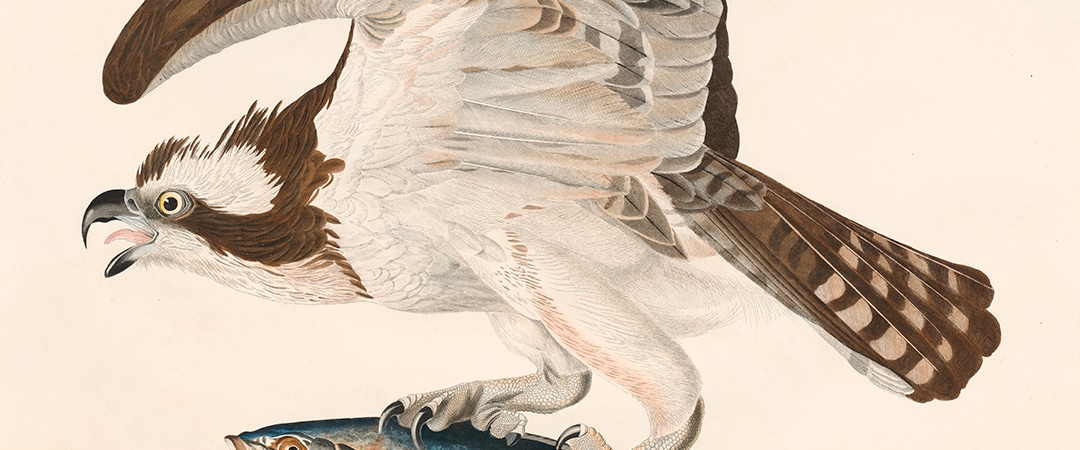
Audubon’s Osprey or Fish Hawk frequently makes its way into the top tier of Audubon’s most sought-after prints for a number of reasons.
To begin with, the image demonstrates a skillful repetition of form and design that appeals to our sense of order and harmony. This is accomplished through the parallel posturing of both predator and prey, an echo of shapes that make the image visually appealing. Additionally, the rendering is a feat of technical mastery as highlighted by the strong foreshortening of the osprey’s left wing and the statuesque quality of both bird and fish. Lastly, the direct, perspectival angle that we are provided with suggests that we are flying alongside the bird, witnessing the hunt. Thus the image is engaging and magnetic, appealing to our sense of design and drawing us in as though we are a part of the activity.
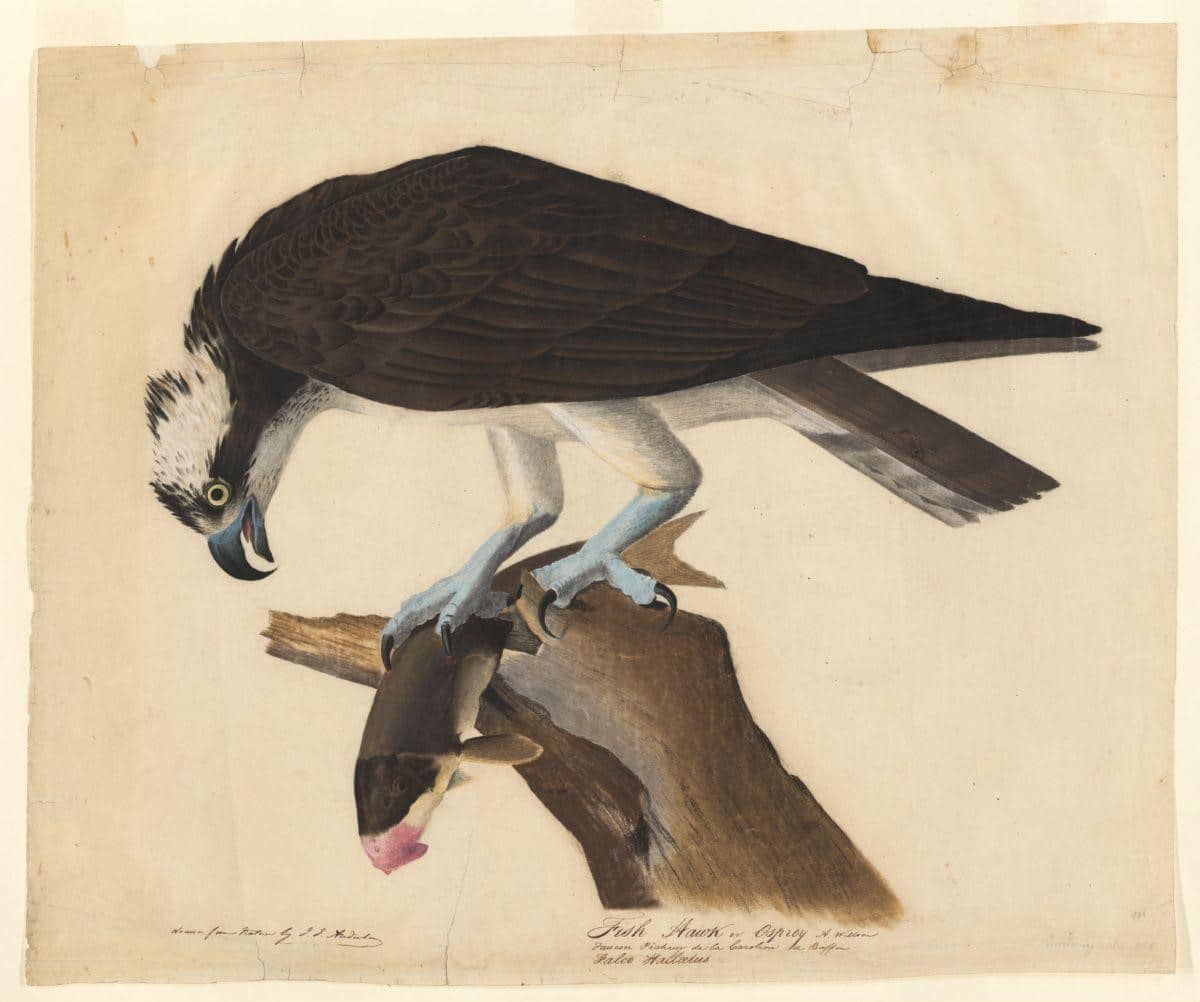
Audubon’s Osprey from 1806
Harvard University, Houghton Library Collection
Audubon depicted the osprey a number of times throughout his life with one of his earliest renderings dating to 1806. This mixed-media painting, currently housed in the Houghton Library collection at Harvard University, captured the osprey perched on a tree branch with a bloodied catch fish secured in its talons. The bird’s frenzied nape feathers and the downward motion of its head suggests a tiring yet fruitful hunt.
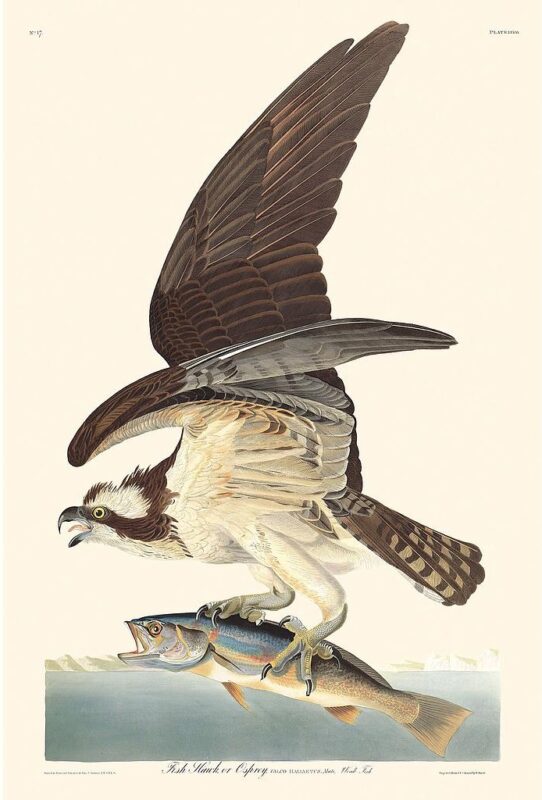
Audubon Havell Edition Pl. 81, Fish Hawk, or Osprey
In contrast, Audubon’s later depiction of the osprey, created for his folio The Birds of America, captures the bird at the apex of action. Flying high above the banks of Perkiomen Creek, the osprey triumphantly brandishes its catch. Mouths agape in unison, the osprey and Weak Fish are rendered in stark profile, emphasizing the mirrored motion of the two. While their internal dispositions are likely in total opposition, their external appearances are congruent. Thus, through mimicry of movement, Audubon draws a visual parallel between predator and prey.
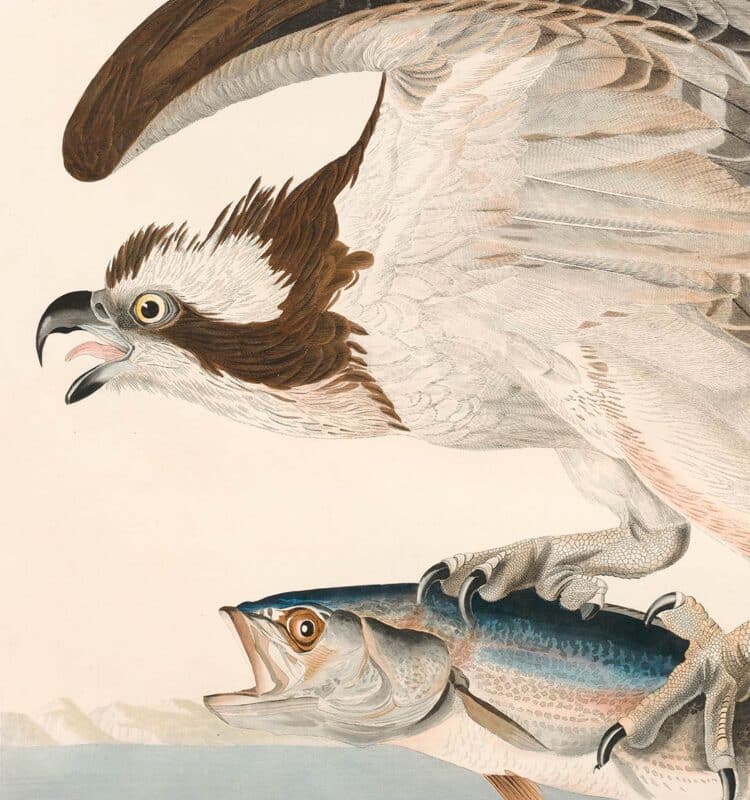
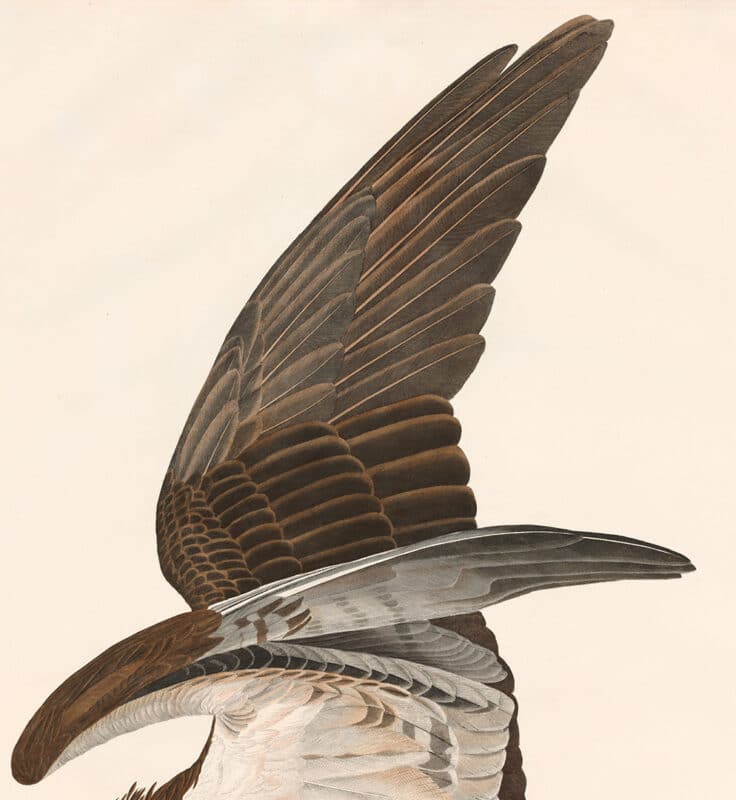
Likewise, the foreshortened perspective at which we view the bird is sharp and exacting, emphasizing the acute angularity of the subjects. In fact, both bird and fish appear solid and statuesque against the quiet waterscape below. We appear to be witnessing the bird while airborne, flying alongside it. We are not merely viewing, but experiencing its uplifting and exhilarating flight.
From a didactic standpoint, Audubon’s print informs us of the osprey’s hunting habits through the positioning of the fish. An informative guide on Audubon.org explains how “After a successful strike, the [osprey] rises heavily from the water and flies away, carrying the fish head-forward with its feet.” This arrangement optimizes the bird’s aerodynamic qualities as it carries its prey through the air. With its sharp talons dug deep into the fish’s slippery flesh, the osprey will now retreat to its roost to enjoy the fruits of the hunt.
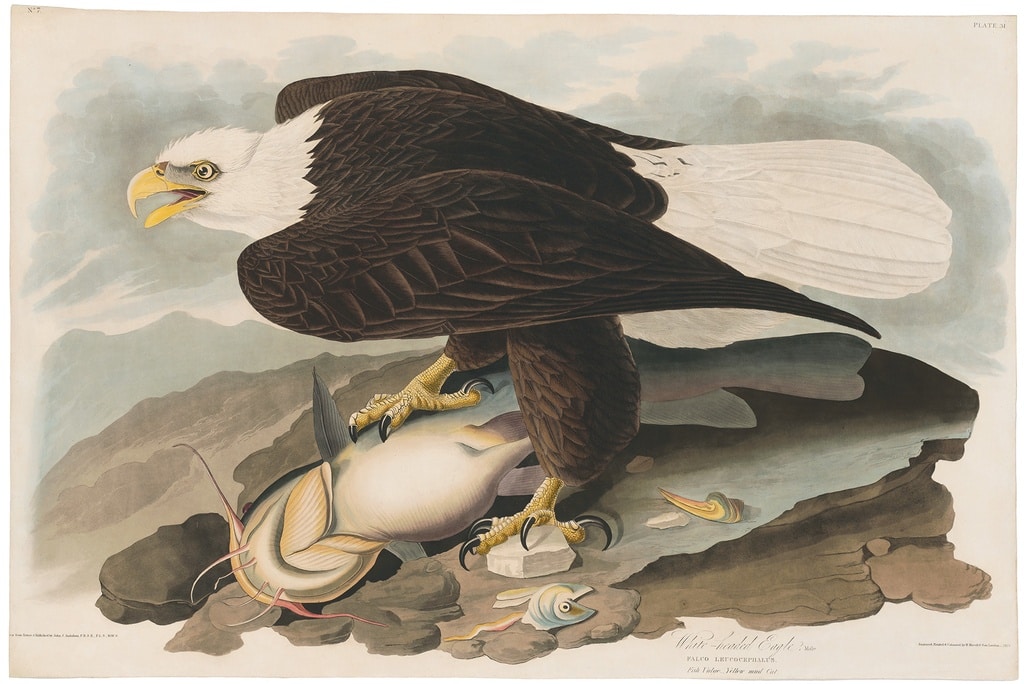
Audubon Havell Ed. Pl 31, White-headed Eagle
However, as Audubon elucidates in his Ornithological Biography, the osprey itself has predators, namely the Bald or White-headed Eagle. He recounts how the osprey “rather than encounter a foe but little more powerful than itself, it abandons its prey to the White-headed Eagle, which, next to man, is its greatest enemy.” This willingness to abandon its catch may be due to the osprey’s “mild disposition.” Unlike the tendencies of some birds of prey, osprey are not reclusive and territorial but rather they “live in perfect harmony together” and “even allow other birds of very different character to approach so near to them as to build their nests of the very materials of which the outer parts of their own are constructed.”
In conclusion, Audubon’s Osprey engages with the viewer in a unique and dynamic way. By positioning us alongside the airborne bird, Audubon offers us a glimpse into the umwelt or experience of the raptor. Moreover, there is a powerful simplicity to the composition of Audubon’s Osprey that allows us to focus solely on the bird and its catch without the distraction of a hyper-visible background. Instead, the solidity and parallel posture of the bird and fish are emphasized with engaging clarity.
